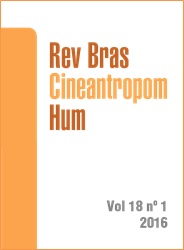Influence of additional players on collective tactical behavior in small-sided soccer games
DOI:
https://doi.org/10.1590/1980-0037.2016v18n1p62Abstract
The aim of this study was to compare the collective tactical behavior between numerically balanced and unbalanced small-sided soccer games. Eighteen male soccer players (mean age 16.4 years) participated in the study. Polar coordinate analysis was performed using positional data obtained with a 15-Hz GPS device. Collective variables including length, width, centroid distance (average point between teammates), and length per width ratio (LPWratio) were collected. Data were analyzed using Friedman’s test. The results showed greater length and width values in 4vs.3 games, while a higher LPWratiowas observed in 3vs.3+2 games compared to the other configurations. In games with an additional player (4vs.3), ball circulation and the increase in effective game space were alternatives to overcome the more concentrated defensive systems near the goal. On the other hand, 3vs.3+2 games allowed more actions in the length axis and a fast reach of the opponent’s goal.



